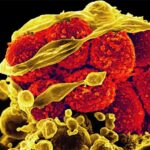 In what has become an annual rite of spring, Martin Health System recently completed an annual exercise designed to test the organization’s hospital incident command system.
In what has become an annual rite of spring, Martin Health System recently completed an annual exercise designed to test the organization’s hospital incident command system.External contractors Hinnant Solutions and HMTX Solutions assisted Martin Health in designing and facilitating a hazardous materials exercise based upon a scenario with a realistic probability of occurrence.
Various community partners, including personnel from local health departments, emergency management, fire-rescue, sheriff and police departments participated in the exercise as players, and fire-rescue personnel provided evaluators for the exercise.
One of Martin Health’s primary goals was to develop an exercise scenario that represented conditions that hospitals could face on any given day.
To this end, HMTX identified relevant threats, both internal and external to hospitals, that could result in a hazardous materials incident presenting at each of three Martin Health facilities, for which no public safely hazardous materials response had been initiated.
 In the first scenario the hospital, which is located in a county with significant agricultural activity, was presented with a number of self-transport victims who had been exposed to organophosphate pesticides. The second scenario involved a leak of spent xylene within the hospital facility, and the third scenario had numerous victims self-present to the hospital with chemical burns due to an industrial accident.
In the first scenario the hospital, which is located in a county with significant agricultural activity, was presented with a number of self-transport victims who had been exposed to organophosphate pesticides. The second scenario involved a leak of spent xylene within the hospital facility, and the third scenario had numerous victims self-present to the hospital with chemical burns due to an industrial accident.The exercise was structured to present the three hazardous materials scenarios concurrently at three Martin Health facilities located in two adjacent counties.
The exercise followed Homeland Security Exercise Evaluation Program guidelines in design, delivery, evaluation and follow-up. The objectives for the exercise focused on incident management and command, interoperable communications, responder safety and health, hazardous response and decontamination operations, medical surge operations, evacuation/shelter-in-place and continuity of operations.
At the conclusion of the 2.5-hour exercise, hot washes were held at each exercise location to identify strengths and areas for improvement.
Martin Health has continued to hold hospital incident command exercises through the years in an effort to continually discover ways to enhance its preparation. At the same time, collaborating with community agencies in the drills has developed valuable relationships that will be necessary if a real-world incident takes place.
Clearly, no one wants to see disasters or emergencies take place at their hospital or in their community. However, there is no substitute for being prepared if one does occur. Trainings like the one Martin Health recently performed are invaluable to prepare for an incident everyone hopes never occurs.



























